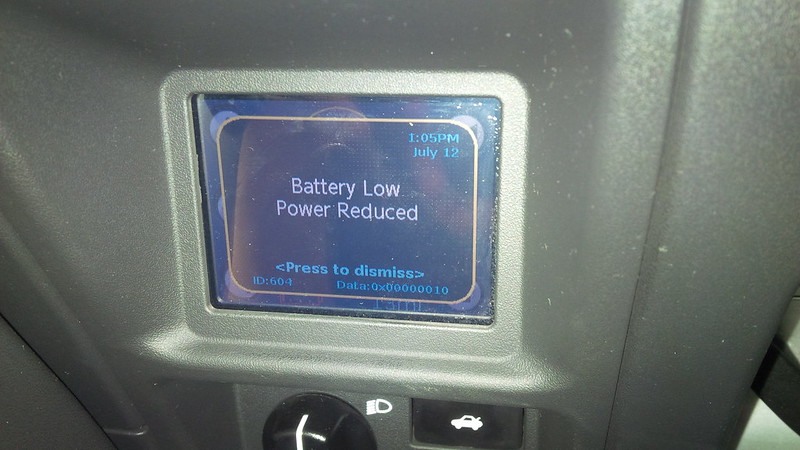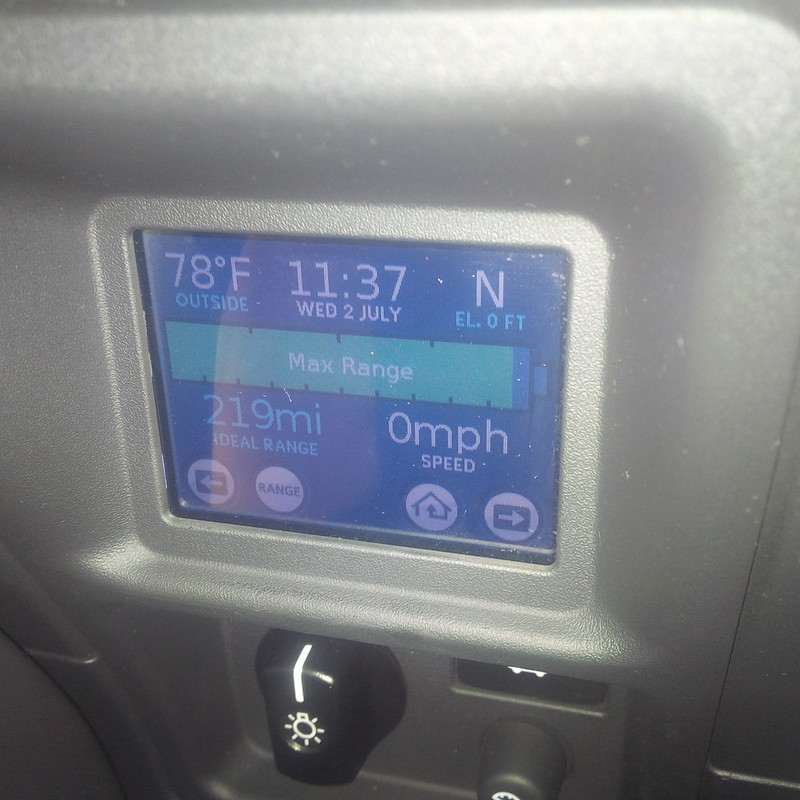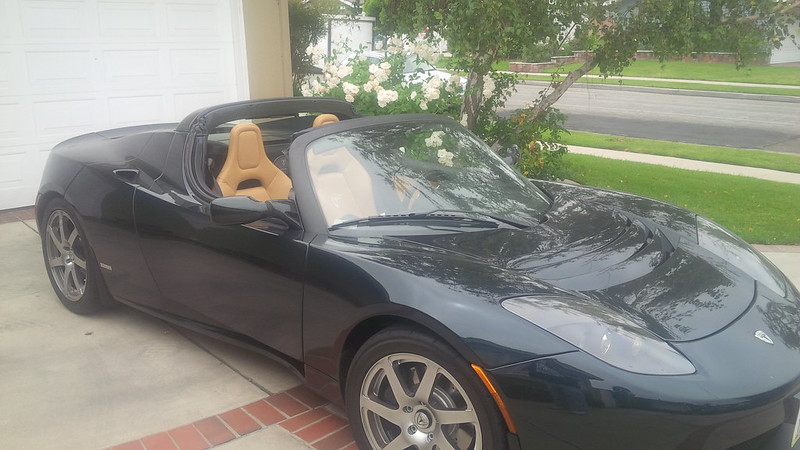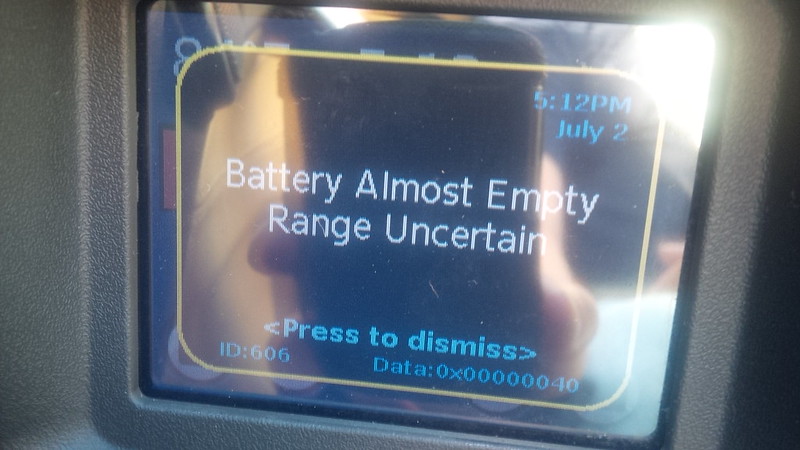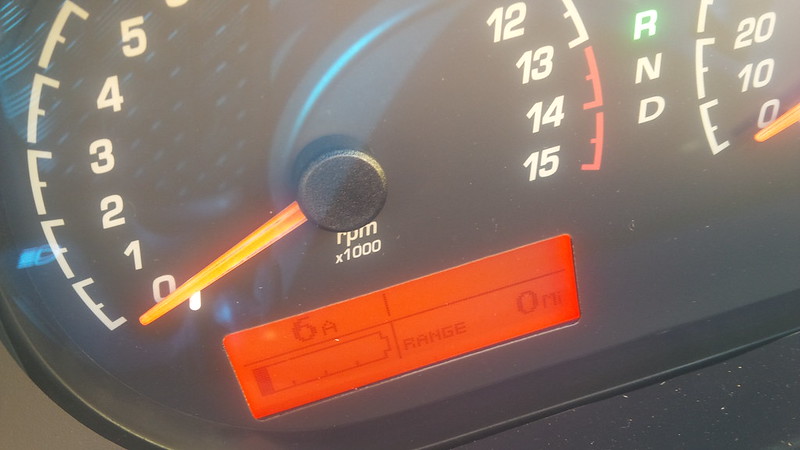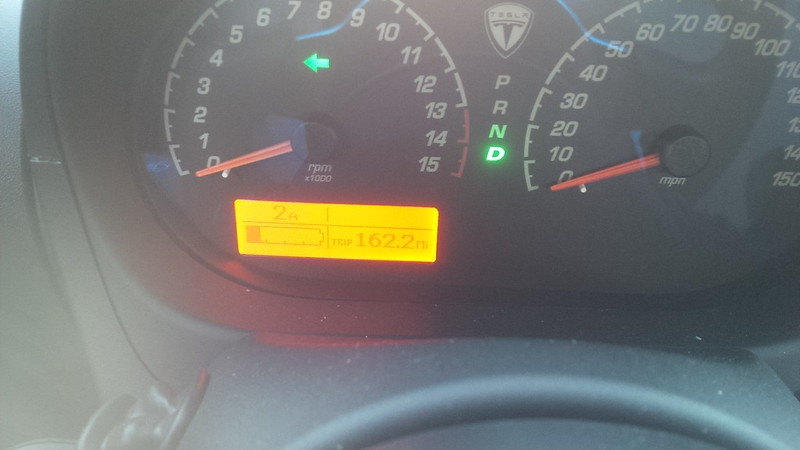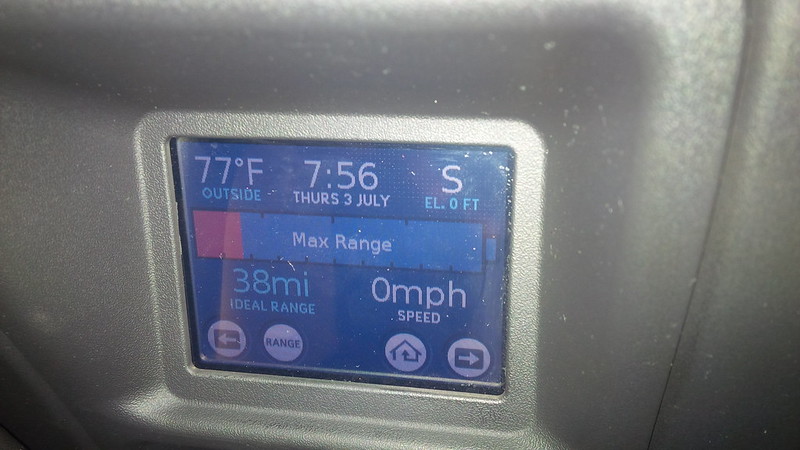I was advised by the Service Center to have my wife do her normal drive and not plug the car in until about ten miles.
So, over the course of several days (from July 9th to July 12th) we did just that. Thank goodness we have OVMS, since I use that to let me know when the SOC has dropped to around 25% and have a good gauge of how much more driving we can do. I used to have it set at 50%, but decided to lower the threshhold since we’re not planning on plugging it in until it’s closer to ten (ideal) miles in standard driving mode. This was just a matter of sending a text message “FEATURE 9 25” to OVMS to configure the SMS Alert when the state of charge drops to 25%. OVMS will send a text back saying “Feature has been set.”
I created a log file to track what the miles would be overnight to see what sort of vampire loss the Roadster had in comparison to the Model S and was pleasantly surprised to see that the car lost 1% over the course of almost 1.64 days from the time I parked the car at home.
| Date | Park at Home | Leave Home | SOC | CAC |
| July 9, 2014 at 6:00 PM | 142 | 81% | 145.73 | |
| July 11, 2014 at 9:23 AM | 142 | 80% | 145.74 | |
| July 11, 2014 at 9:10 PM | 76 | 44% | 145.66 | |
| July 12, 2014 at 11:41 AM | 76 | 44% | 145.66 | |
| July 12, 2014 at 1:07 PM | 13 | 7% | 145.66 | |
| July 13, 2014 at 12:00 AM | 234V/40A | 325 Minutes | 5.416666667 | hours |
| July 13, 2014 at 6:30 AM | 175 | 97% | 145.66 |
As you can see from the spreadsheet above, I actually had the car at the Service Center and back home the first day, July 9th. I parked the car around 6pm with 142 Ideal Miles of Range left and the car sat unplugged at home for a little over a day and a half, before my wife took the car out on Friday. Per OVMS readings, it had lost about 1% SOC (and no ideal miles). She drove the car for about 66 ideal miles (closer to 60 actual miles) and got home on Friday night with 76 ideal miles (and 44% SOC) of range left in the car.
Overnight, the car did not lose either ideal miles or % SOC and we drove off. Around 20 ideal miles left (and on the way home) on Saturday, we got the following error:
Though it mentions that power is limited, I was on the freeway, and the power seemed to be fine.
We finally plugged in with 13 ideal miles of range last night. Interesting, the rated range was down to 12 miles.
So, after 158.4 miles for the past few days, we recharged at standard mode.
7% SOC in Standard mode left, and the CAC values dropped to 145.66. We recharged overnight and ended up with 175 ideal miles at 6:30 AM. Basically, I checked the status when I woke up, and wrote it down. Because by the time I rolled out earlier today I already lost a mile of range. We will have to do this again for a few more times this next month, but that didn’t seem to have helped any. It’s going to be a long month.
